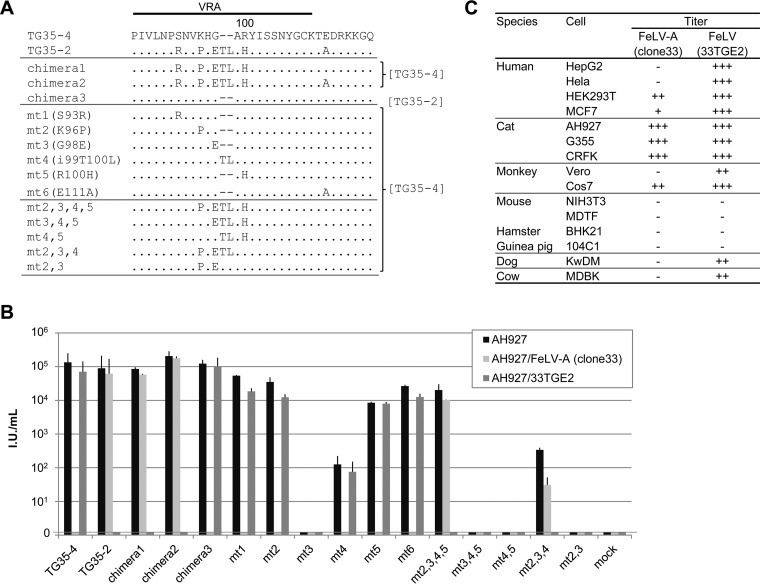FIG 2.
Determination of the amino acids in the Env protein that are required for the TG35-2 phenotype and the host range of FeLV 33TGE2. (A) The indicated mutant FeLV env genes, constructed in either the TG35-2 or TG35-4 env gene, were generated with site-directed mutagenesis or recombination of the VRA in the pFUΔss vector (7). The env sequences other than the VRA, derived from TG35-2 or TG35-4 env, are described at right. (B) GPLac cells were transfected with the indicated FeLV env genes inserted into the pFUΔss expression vector. Supernatants were passed through 0.45-μm filters and used for infection assays in AH927 cells, AH927/FeLV-A (clone 33) cells, and AH927/33TGE2 cells. Titers were determined with X-Gal (5-bromo-4-chloro-3-indolyl-β-d-galactopyranoside) staining (7). The data shown are the averages from several independent experiments, with their standard errors. (C) Replication-competent virus or its LacZ-encoding pseudovirus, produced by the transfection of 293Lac cells (HEK293T cells stably containing a LacZ-encoding retroviral vector) with either FeLV-A clone 33 or the FeLV 33TGE2 plasmid, was used for the infection assay. The indicated target cells were used to determine the host ranges of the viruses. Titers were determined with X-Gal staining. −, zero infection titer; +, 101 to 103 IU/ml; ++, 103 to 105 IU/ml; +++, >105 IU/ml. The data shown are the averages from three independent experiments.

